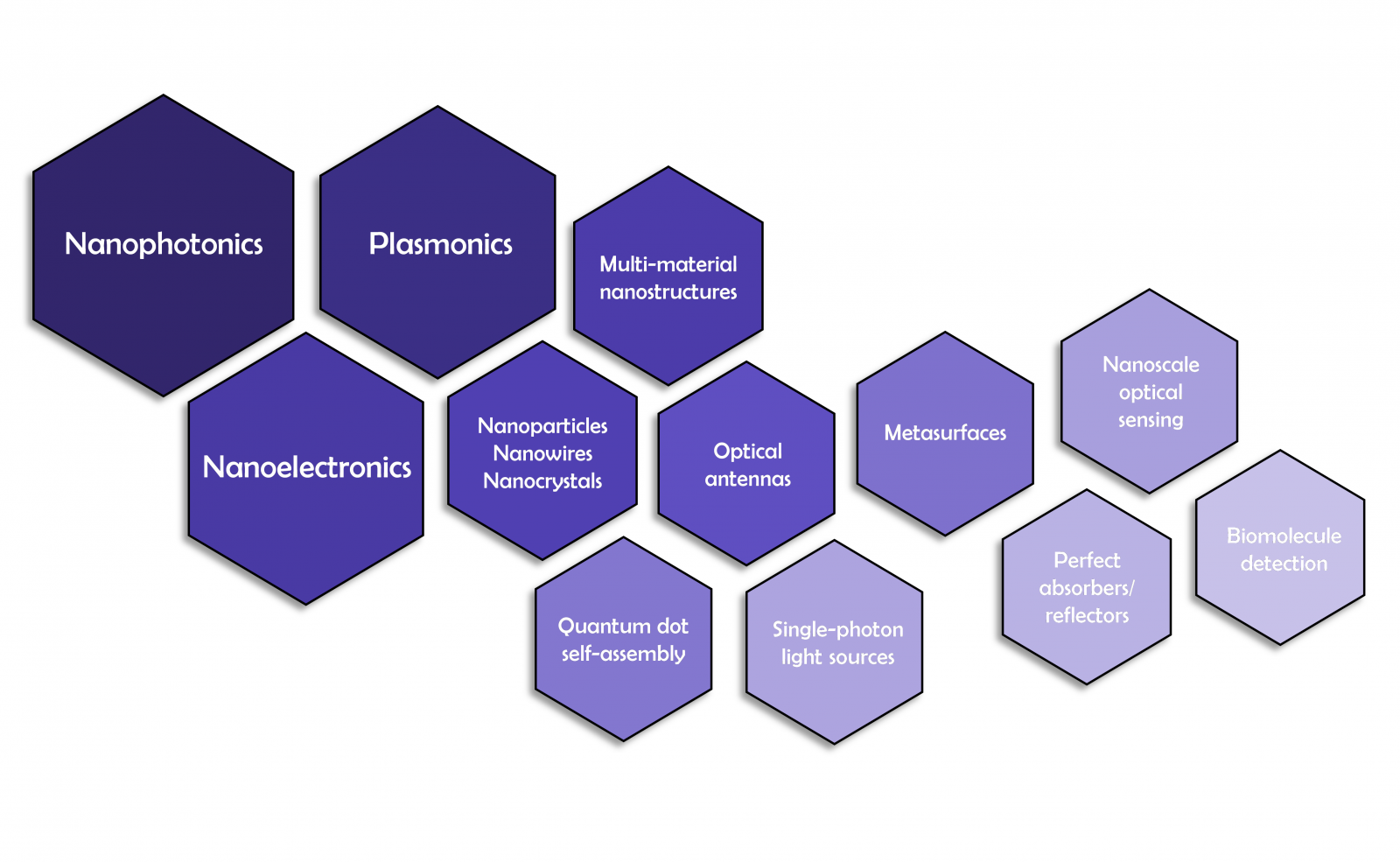Nanomaterials research

Nanomaterials with exotic properties can be created by assembling matter into complex 2D and 3D nanostructures. Our research topics are focused around the central idea of using nanostructured materials to manipulate and control light in the sub-wavelength regime. Nanophotonic materials can be used for high-resolution molecular sensing, light absorption enhancement and photon management in photovoltaic cells or as anti-reflective or self-cleaning surface coatings.
We design, fabricate and study various types of nanomaterials. We are mainly interested in materials and nanostructures that interact with light in the visible to near-infrared range. For this, the metal or semiconductor structures need to be smaller than the wavelength of light. The creation of nanostructured materials can be technologically challenging and one of our goals is to discover large-scale nanofabrication methods where the devices and materials “build themselves”.
Self-assembled nanostructures

Inspired by biology, bottom-up nanofabrication approaches start from basic building blocks, such as atoms or molecules, and use them to build functional nanostructures and devices. These building blocks arrange themselves into nanostructures on their own due to physical and chemical driving forces present at the nanoscale.
Recently we have been interested in block copolymer (BCP) self-assembly and hydrothermal crystal growth processes. BCPs are tailored molecules that phase-separate into small, repeating 2D and 3D patterns. We have used these patterns as templates to make light absorbing metasurfaces and nanoscopic optical resonators. See Publications for more information.
Modeling

Because we cannot see what happens to light in the nanoscale, optical modeling is needed. Photonics CAD tools such as Lumerical and Comsol help understand how light waves interact with the nanostructures. Nanophotonic modeling can also be used to aid the design of photonic materials and test how changes in the structure geometry affect the optical performance.

